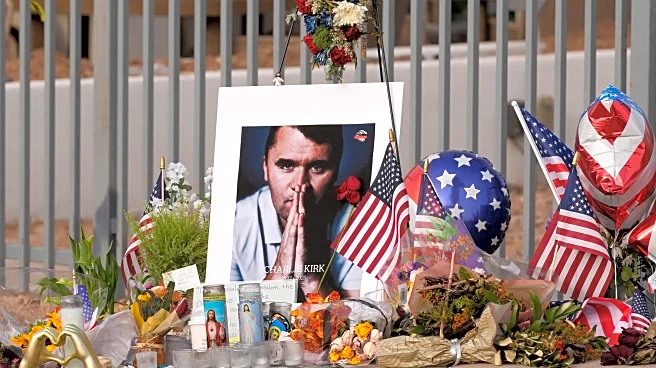What's Happening?
Minnesota trade schools are witnessing a significant increase in enrollment, particularly in IT and cybersecurity programs. This trend is part of a broader national movement where more individuals are opting for career and technical education over traditional
four-year degrees. The Minnesota State system, which includes 33 public colleges and universities, reported a 5% increase in college enrollments this fall, with technical schools seeing the largest growth. Minneapolis College, for instance, has experienced a 45% rise in trade program enrollments over the past three years. This shift is driven by the rising costs of four-year degrees, student debt, and a challenging job market for college graduates. Additionally, there is a growing demand for skilled tradespeople as industries expand and older workers retire.
Why It's Important?
The increasing enrollment in trade schools reflects a significant shift in educational and career preferences in the U.S. This trend could have substantial implications for the labor market, potentially alleviating the shortage of skilled workers in various industries such as construction, healthcare, and technology. As more students and their families recognize the value of trade programs, which often lead to well-paying jobs without the burden of student debt, the stigma associated with non-degree careers is diminishing. This change could lead to a more diversified workforce and help meet the growing demand for skilled labor in sectors that are critical to the economy.
What's Next?
As the interest in trade programs continues to grow, educational institutions may expand their offerings to accommodate the increasing demand. This could involve developing new programs in emerging fields and enhancing existing ones to ensure they align with industry needs. Additionally, there may be increased collaboration between trade schools and industries to create apprenticeship opportunities and ensure that graduates are job-ready. Policymakers might also focus on supporting these educational pathways through funding and policy initiatives to further encourage enrollment and address workforce shortages.
Beyond the Headlines
The rise in trade school enrollments could lead to long-term cultural shifts in how education and career success are perceived in the U.S. As more individuals pursue non-traditional educational paths, there may be a broader acceptance of diverse career trajectories. This could also influence high school curricula, with a greater emphasis on career and technical education, preparing students for a variety of post-secondary options. Furthermore, as the workforce becomes more diverse, industries may benefit from a wider range of perspectives and skills, potentially driving innovation and growth.














